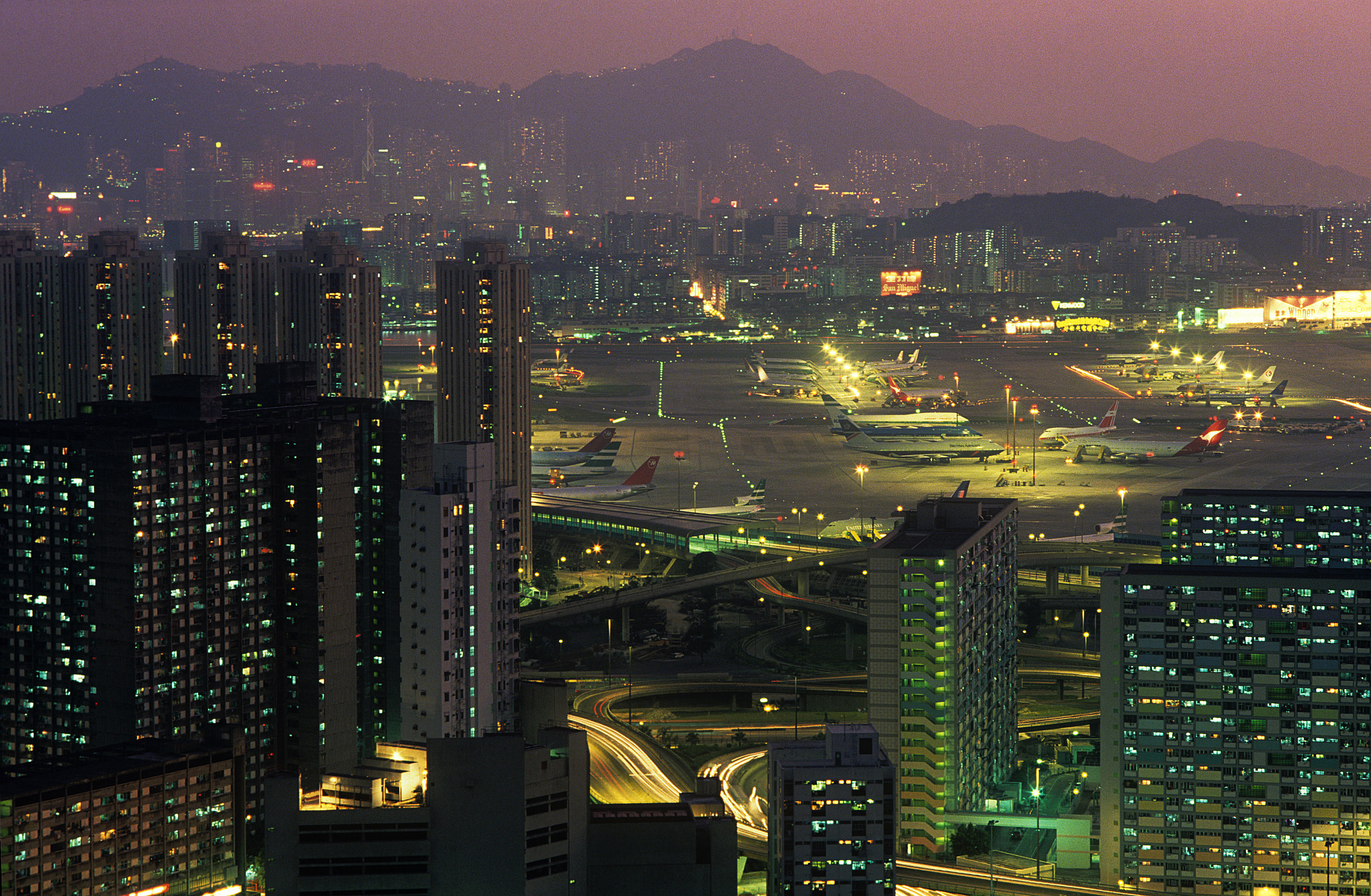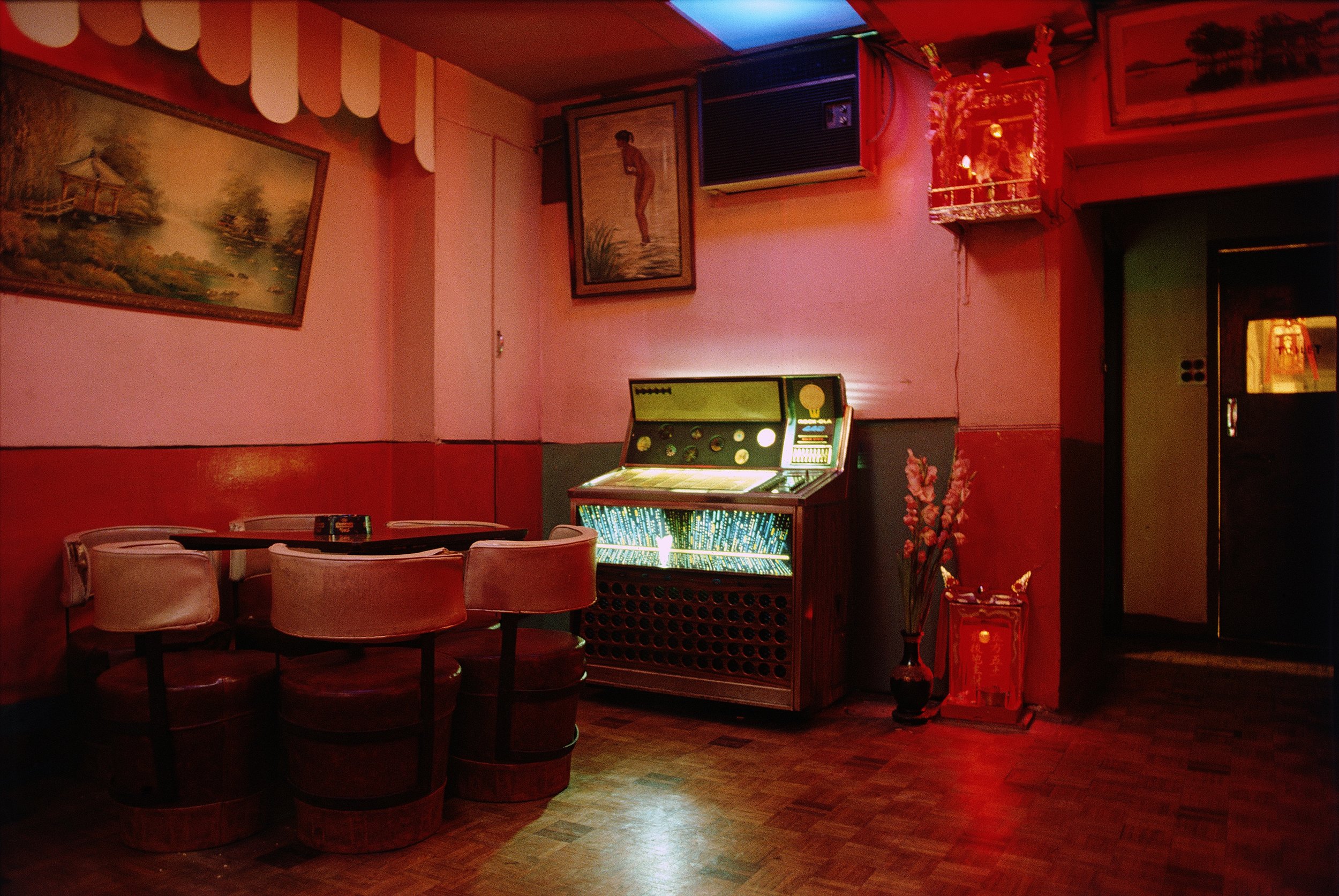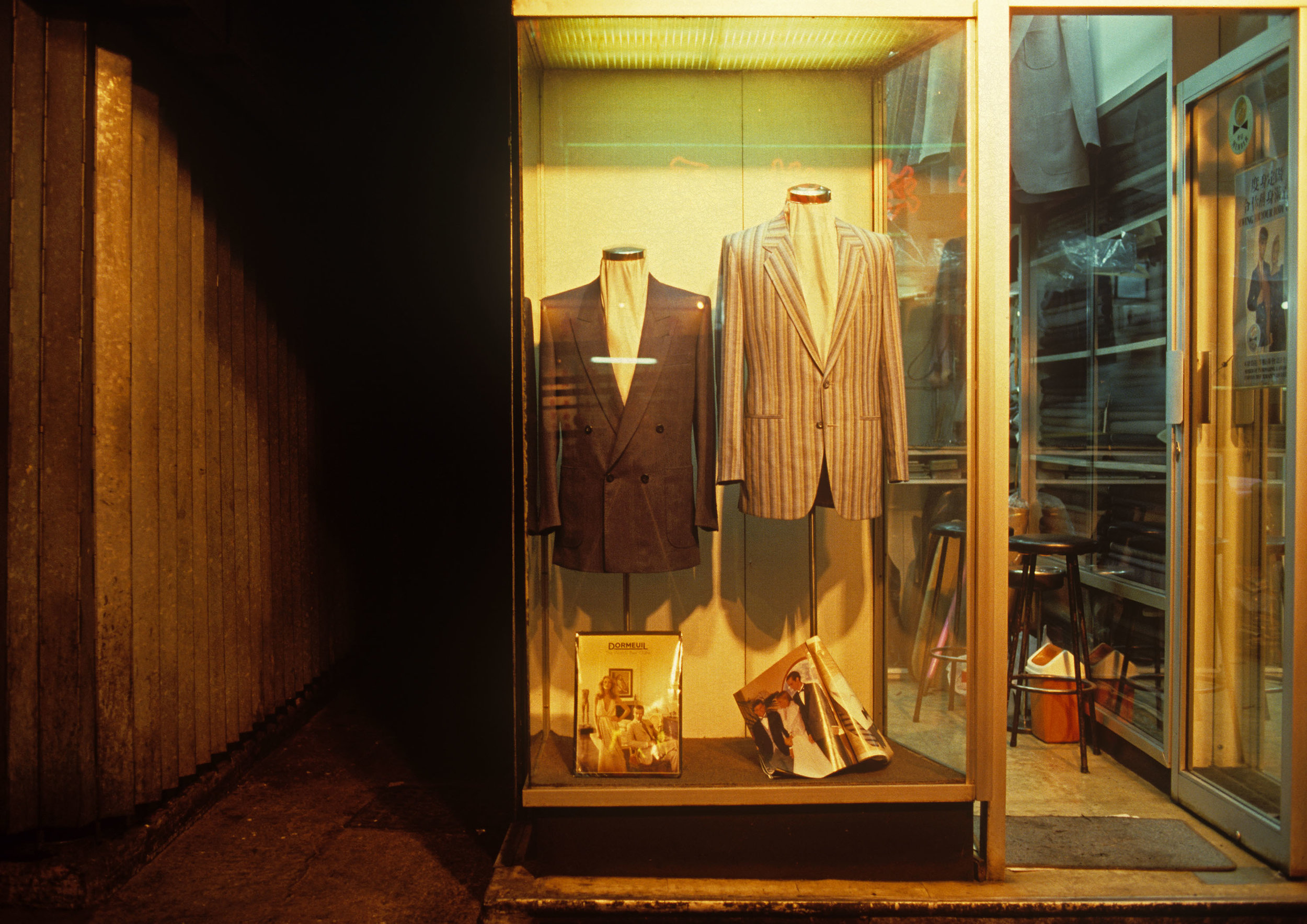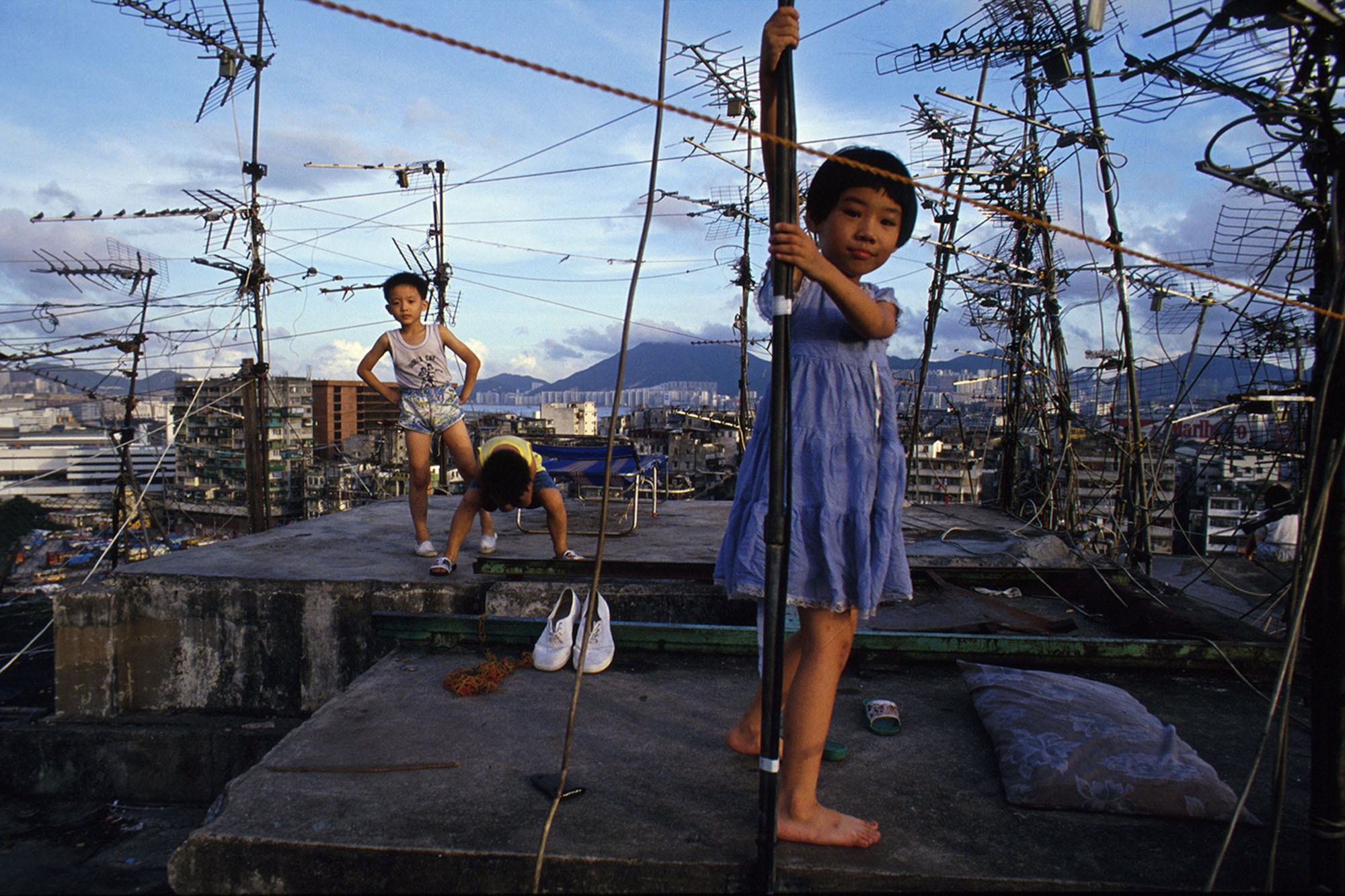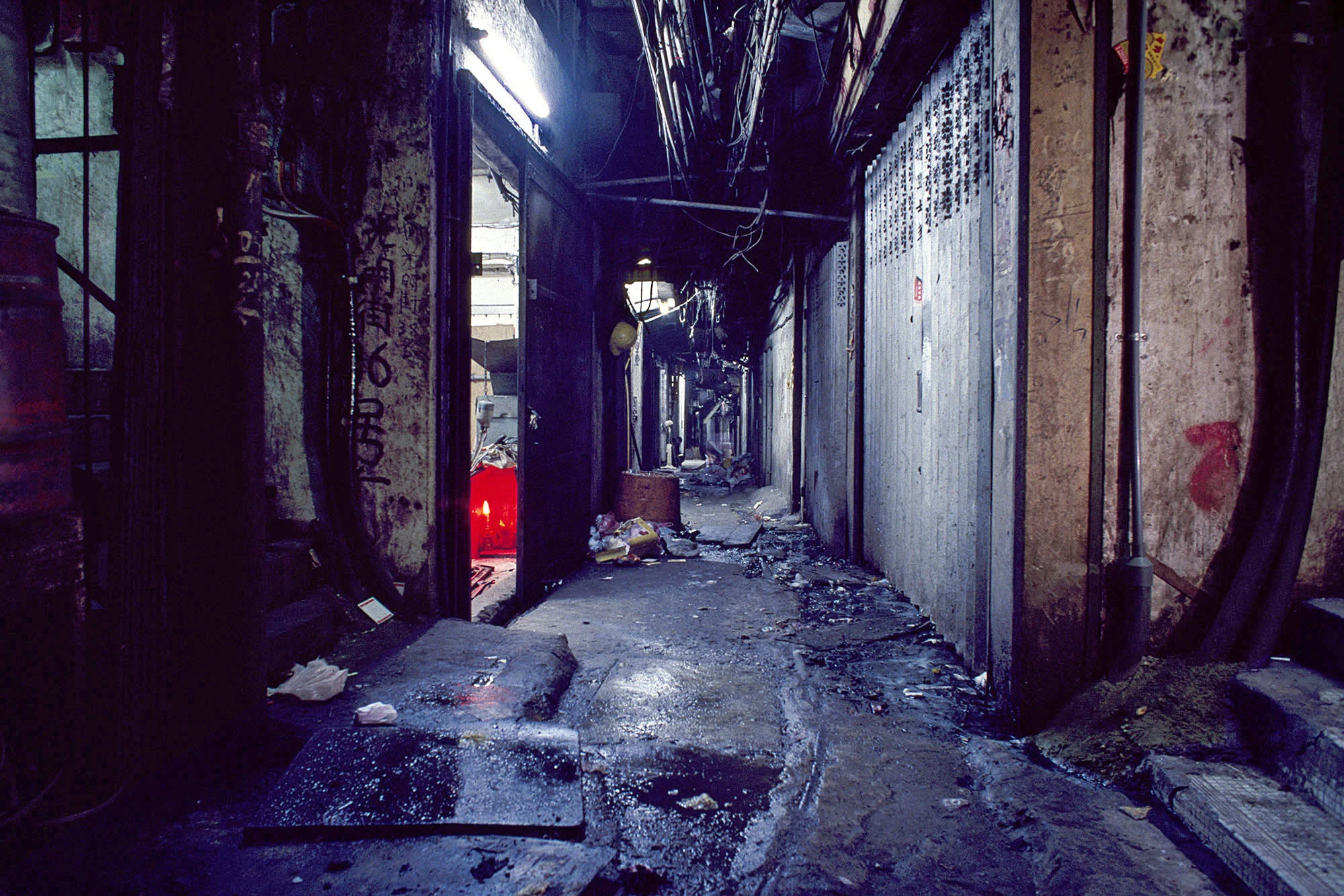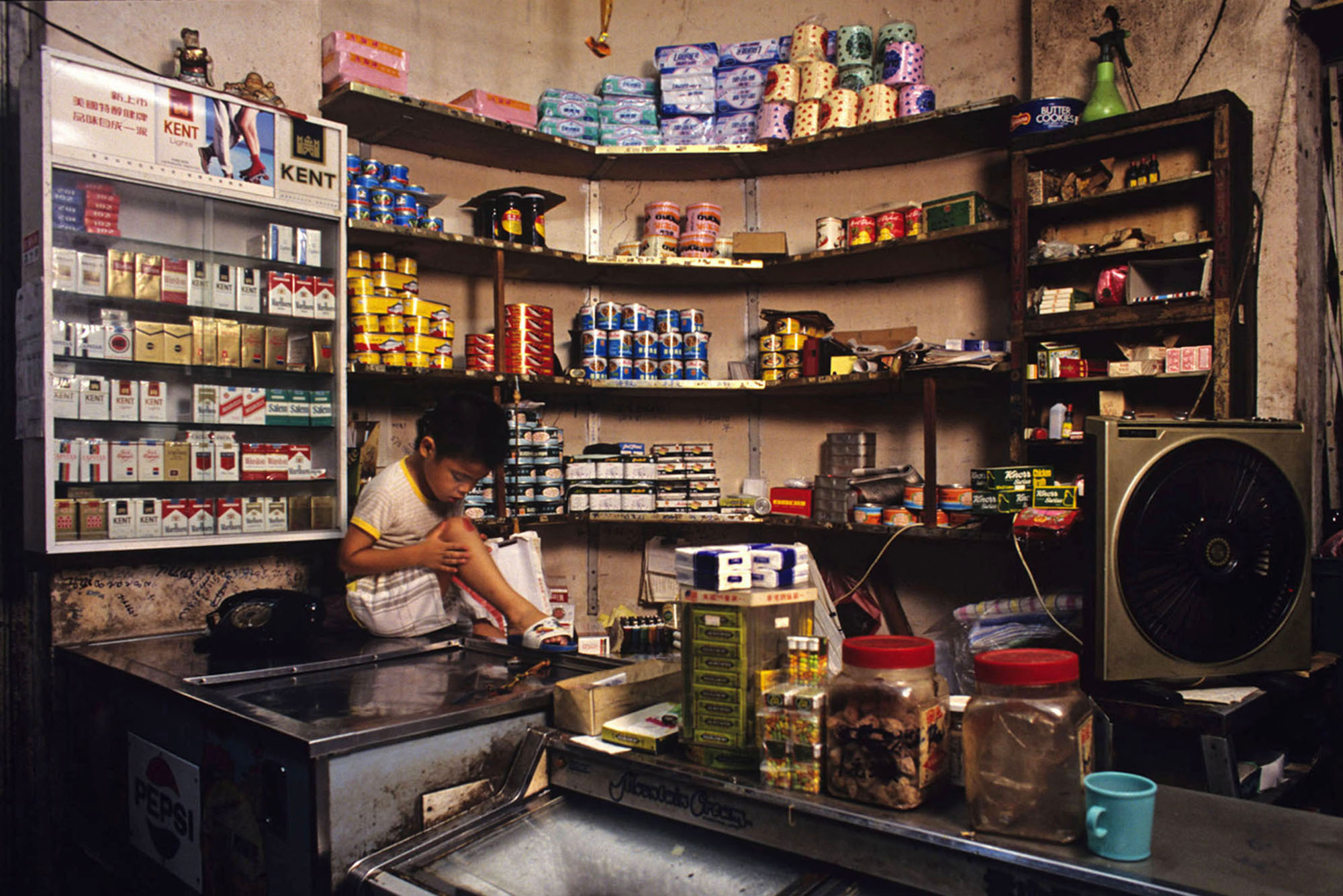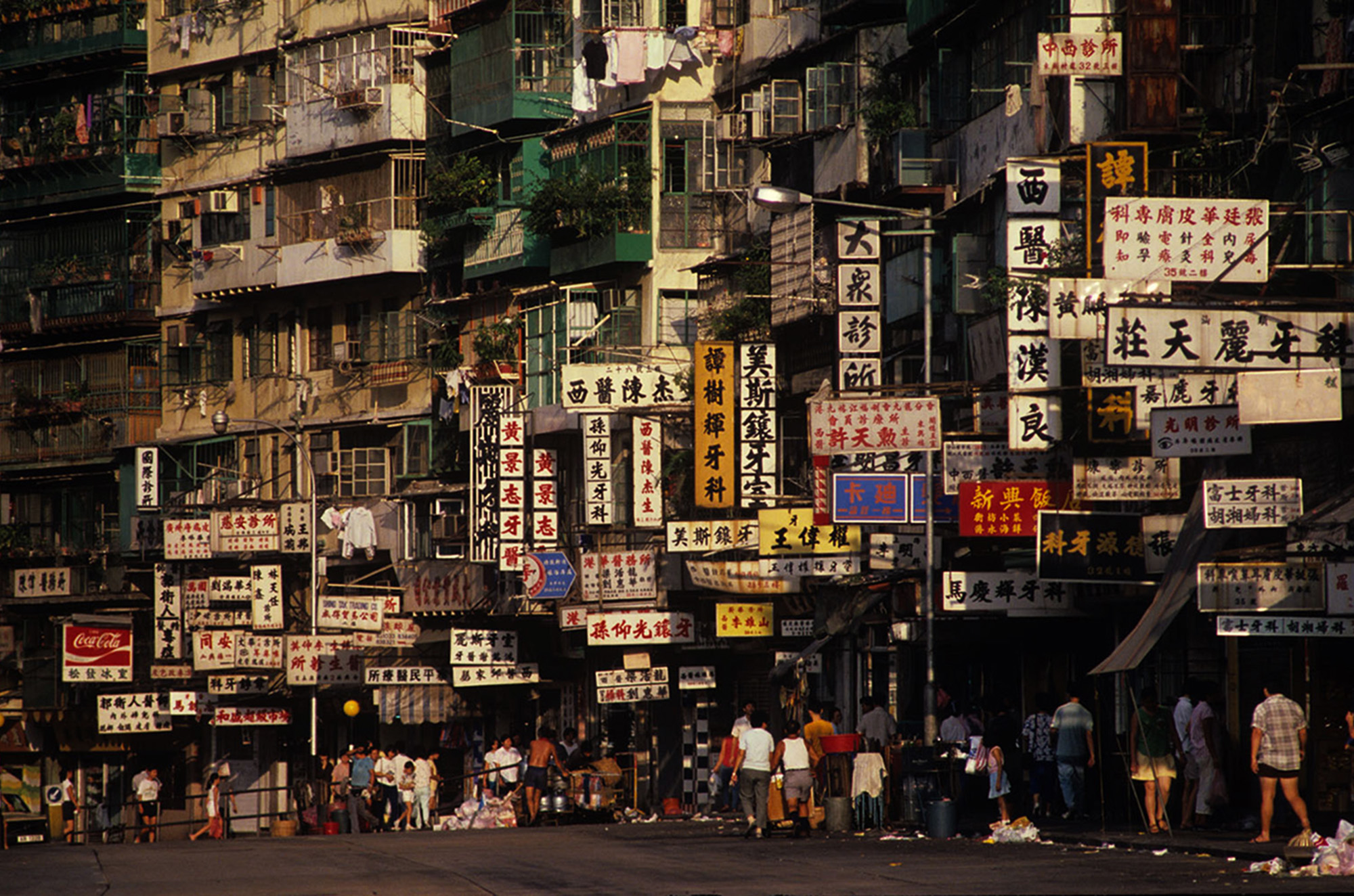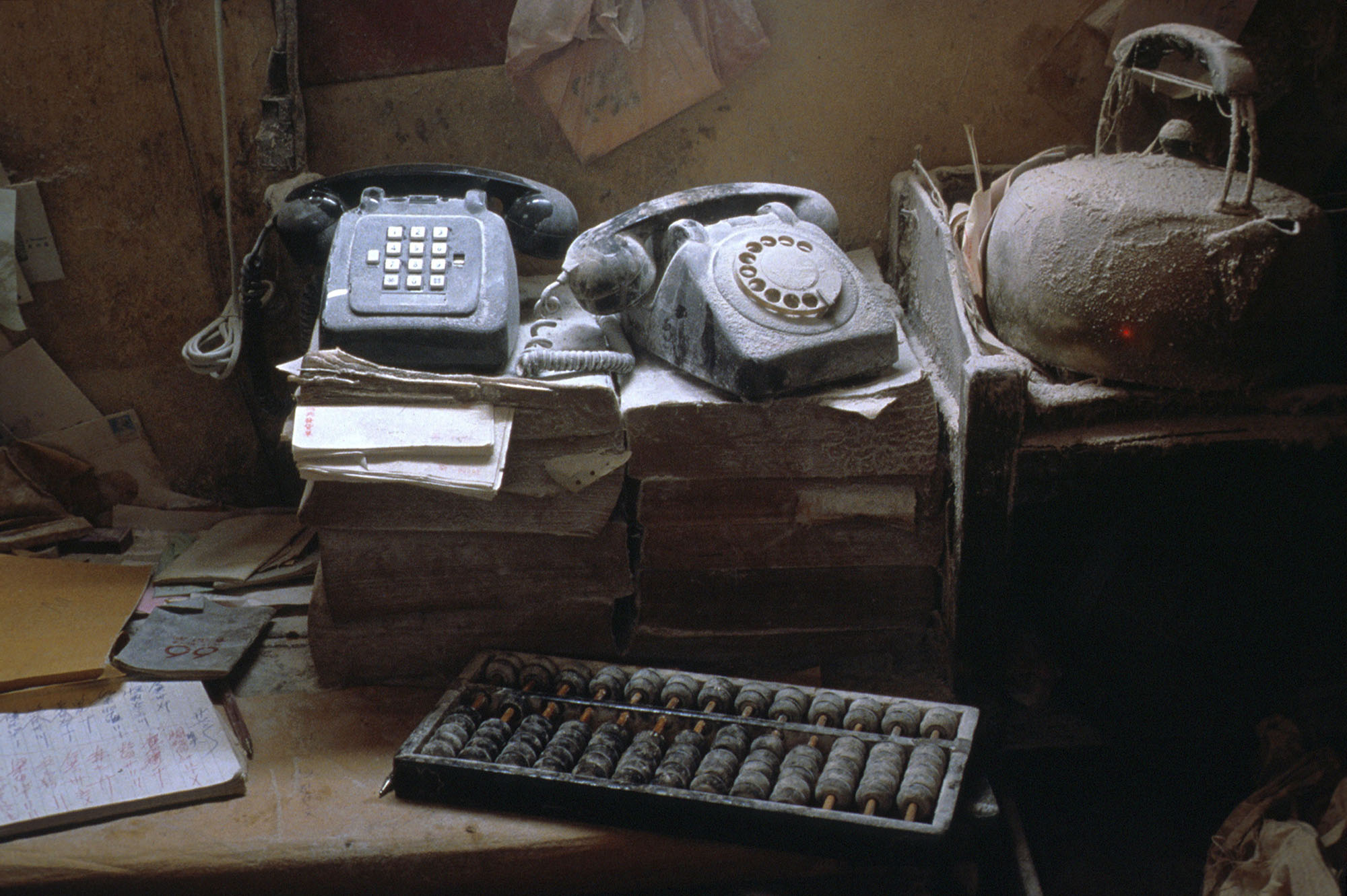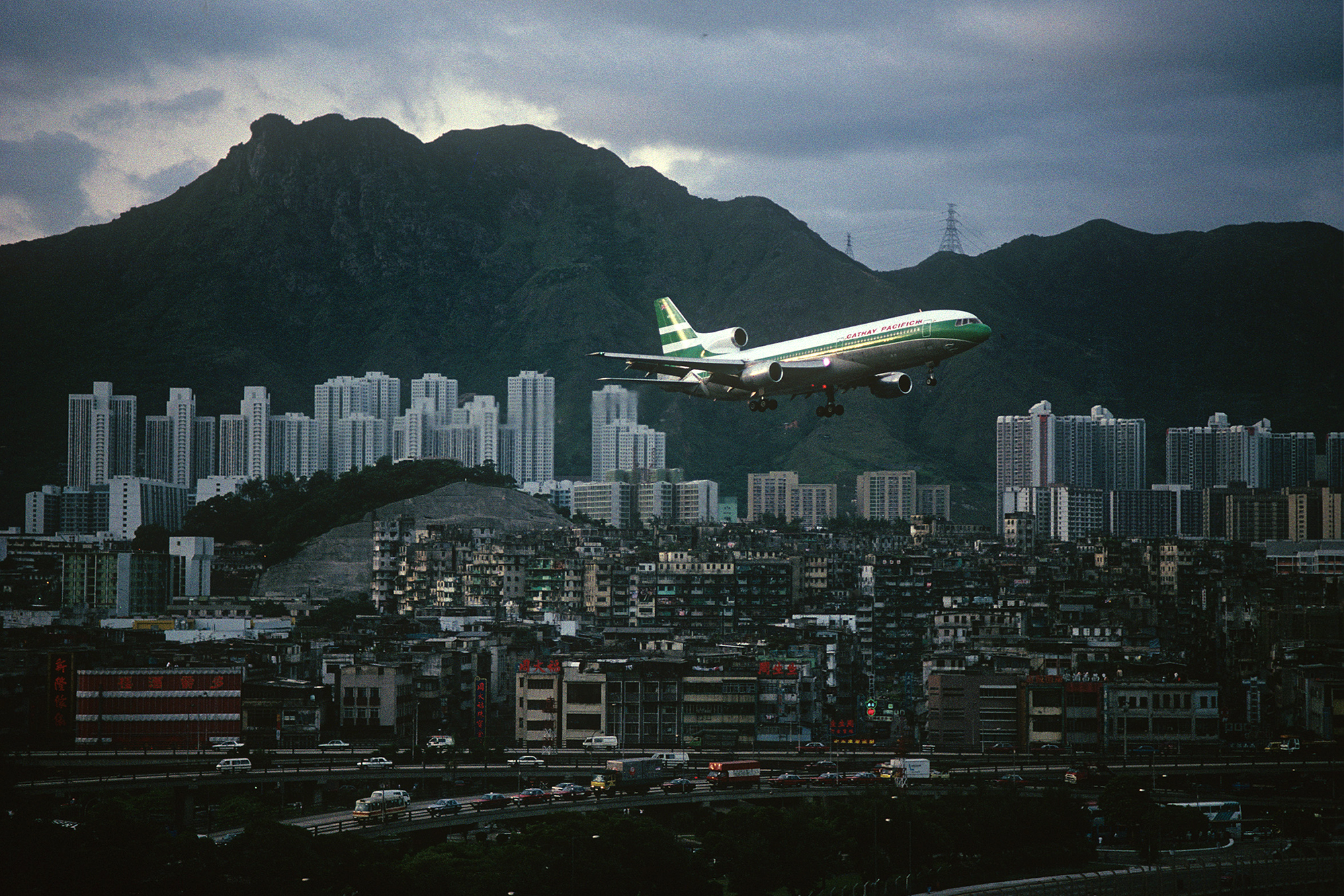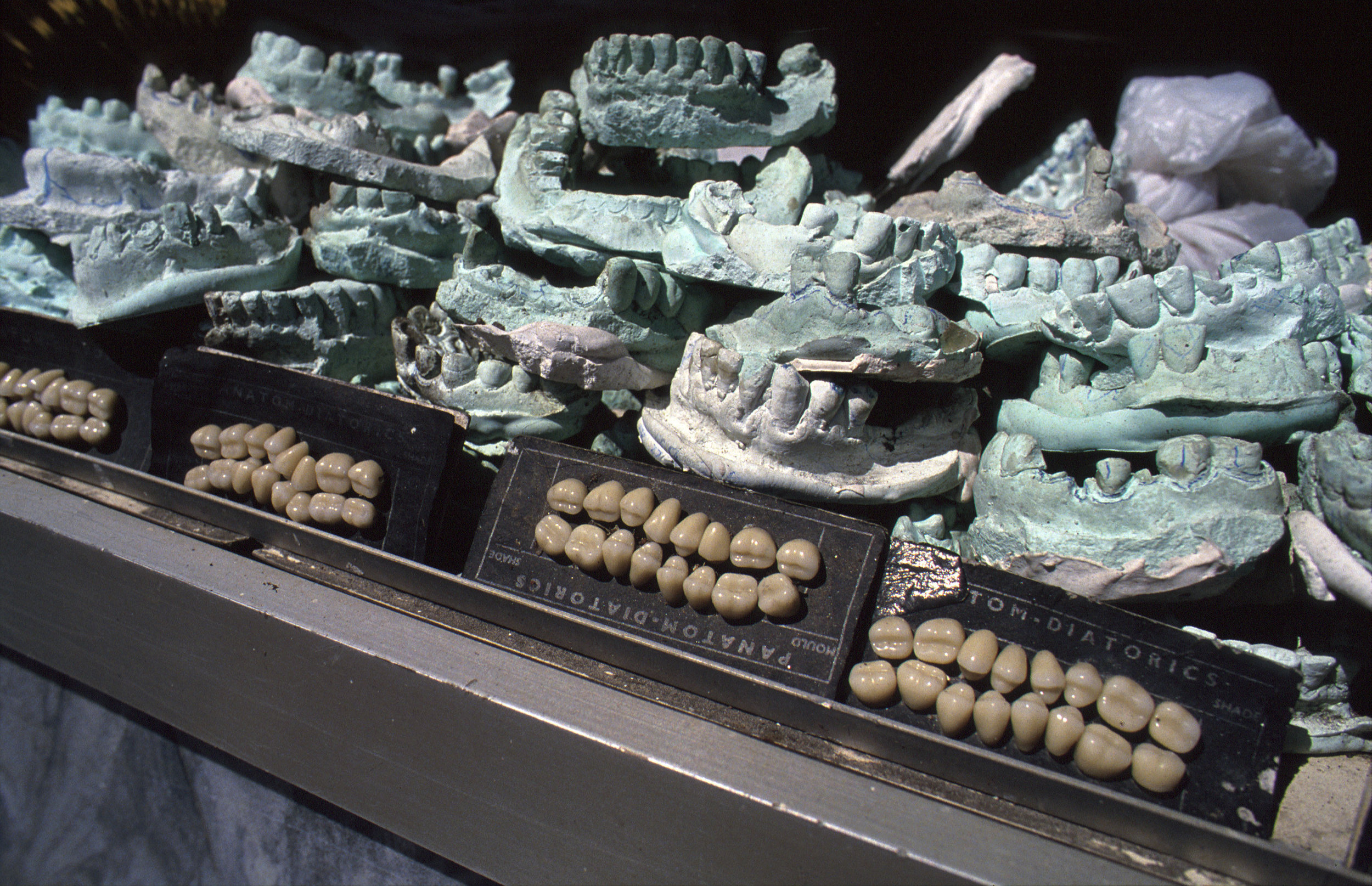Greg Girard
Greg Girard is a Canadian photographer renowned for his documentary work exploring the shifting social and urban landscapes of Asia’s largest cities.
Born in Vancouver in 1955, he studied photography at the Emily Carr College of Art and Design, and his early projects centered on Vancouver’s urban environment. In the early 1980s, however, he began traveling extensively across Asia, photographing cities such as Hong Kong, Bangkok, and Tokyo, with an impressive eye for composition, light, and color.
Over the decades, he has become celebrated for his insightful and often haunting depictions of Asia’s rapidly transforming urban landscapes, images that function both as vital historical records and as works of striking artistic beauty.
“I went to Asia in 1974, and that was the first trip outside of North America, and it was a big photographic adventure, as well as a personal one. I think it was all part of trying to get deeper into the place you’re at, in a way that shows what’s there.”
Text from 'American Suburb X'
© Greg Girard, ‘Cathay Pacific Tri-Star and Kowloon Walled City’, 1989
One of Girard’s most renowned projects is City of Darkness, his photographic exploration of Hong Kong’s Kowloon Walled City. The enclave, once one of the most densely populated and largely unregulated urban settlements in the world, was infamous for its cramped living conditions and illicit activities. Girard’s photographs offer a vivid and intimate portrait of life inside the Walled City before its demolition in 1993. He has also published books on other Asian cities, including Phantom Shanghai, Hanoi Calling, HK:PM, and Tokyo-Yokosuka 1976–1983.
His work has appeared in leading publications such as National Geographic, TIME, Newsweek, The New Yorker, The National Post, and The Star, among many others. Girard’s photographs have been exhibited internationally at institutions including the International Center of Photography (New York), PM Gallery (London), the National Gallery of Canada (Ottawa), and the Yixian International Photo Festival (China). His work is also held in the collections of major museums, including the Museum of Modern Art (New York), the San Francisco Museum of Modern Art, and M+ in Hong Kong.
He currently lives in Vancouver and is represented in Hong Kong by Blue Lotus Gallery.
關於 Greg Girard(格雷格‧吉拉德):
格雷格·吉拉德(Greg Girard)是知名加拿大攝影師,作品主要探討亞洲大城市在三十多年間的社會和實體變化。他與 林保賢(Ian Lambot)共同撰寫了正式記錄香港九龍城寨的著作《黑暗之城:九龍城寨的日與夜》。迄今為止,除上述經典著作外,他還出版了七本攝影集,包括《HK:PM》、《 Tokyo-Yokosuka 1976-1983》、以及經已出版第三版,由小說家 威廉‧吉布森(William Gibson)寫序,並被英國《獨立報》評為有史以來十大攝影書籍之一的《Phantom Shanghai》(Magenta, Toronto, 2007)。他作品獲加拿大國立美術館、安大略美術館、溫哥華美術館收藏,還見於其他公共和私人藏品之中。
HK:PM
(book launch and solo exhibition at Blue Lotus Gallery, 2016)
HK UNSEEN
(exhibited at Blue Lotus Gallery, November – December 2021)
Widely regarded as Hong Kong’s “Golden Age,” the 1980s were a decade when the city came into its own, brimming with promise and possibility. Growing up in Vancouver, a young Greg Girard was profoundly struck by a 1962 photograph of Hong Kong harbour by Eliot Elisofon, an image that sparked a lifelong determination to see the city for himself. He first arrived by boat in 1974, and by 1982 had decided to settle in the bustling metropolis.
Drawn to Hong Kong’s dynamic interplay of East and West, Girard spent the 1980s roaming its streets, camera in hand, capturing the city as he experienced it, especially at night, raw, electric, and alive. This formative period proved crucial in shaping his path as both photographer and artist. In 2021, Blue Lotus Gallery presented HK UNSEEN, an exhibition showcasing a selection of Girard’s photographs from this era that had never been shown before.
The story of Hong Kong is one of constant change, but as the saying goes, memories last forever. For many, the 1980s remain the city’s golden era: square-shaped cars belching diesel fumes shared the roads with jam-packed trams (a ride still just 30 cents) and the occasional bicycle. The streets teemed with people: labourers balancing heavy loads on their shoulders, dapper men in hats with matching ties, and an ever-growing number of professional office ladies. For some, nostalgia clings to those “simpler” days, when roles seemed more defined and youth still carried a sense of innocence.
Every great city has moments that come to define it, and the 1980s marked Hong Kong’s emergence as an international player. The Stock Exchange of Hong Kong was incorporated in 1980, laying the foundation for the financial hub we know today. This was the era before the internet: telephones still had dials, pagers were a novelty reserved for emergencies, and the city’s entrepreneurial spirit thrived as China’s opening created new opportunities. Rags-to-riches stories, always part of Hong Kong’s DNA, now became realities for many.
At night, the city glowed beneath a sea of neon, while passenger jets skimmed low over Kowloon rooftops on approach to Kai Tak Airport. Wan Chai bars brimmed with sailors, businesspeople, and dreamers from every walk of life. Cantopop reached its peak, with the voices of Leslie Cheung and Anita Mui blaring from transistor radios, while Hong Kong cinema—propelled by rising stars like Chow Yun-fat—captured global attention, forging cultural connections across Chinese communities and beyond.
It was in this atmosphere—hazy, playful, and endlessly alive—that Greg Girard began making pictures. Fresh out of high school, he had worked odd jobs to save for a journey on a freighter from San Francisco, arriving in Hong Kong at just 18. “I first visited Hong Kong in 1974, and made several subsequent visits before moving to the city in 1982, where I was based until 1998. Most of the photographs were made before I became a professional photographer, and they show the Hong Kong I explored without any thought to how the pictures might be seen or where they might end up,” he recalls.
Girard’s photographs were born of instinct, a response to the visual feast exploding around him, charged with the excitement of possibility. “Like any ‘golden age,’ you don’t realise you’re living in it until much later. Perhaps the 1980s were special because popular culture, particularly the films but also the music, played such a huge role in defining what Hong Kong was at the time.” His images remind us of a city too busy working and playing to pause for reflection, offering a rare view of both the extraordinary and the ordinary that together defined the era.
Blue Lotus Gallery was honoured to present HK UNSEEN, a solo exhibition exclusively showcasing Greg Girard’s previously unseen photographs of Hong Kong. Through his lens, visitors were transported back to the 1980s, reliving the sights, sounds, and spirit of a city now long transformed.
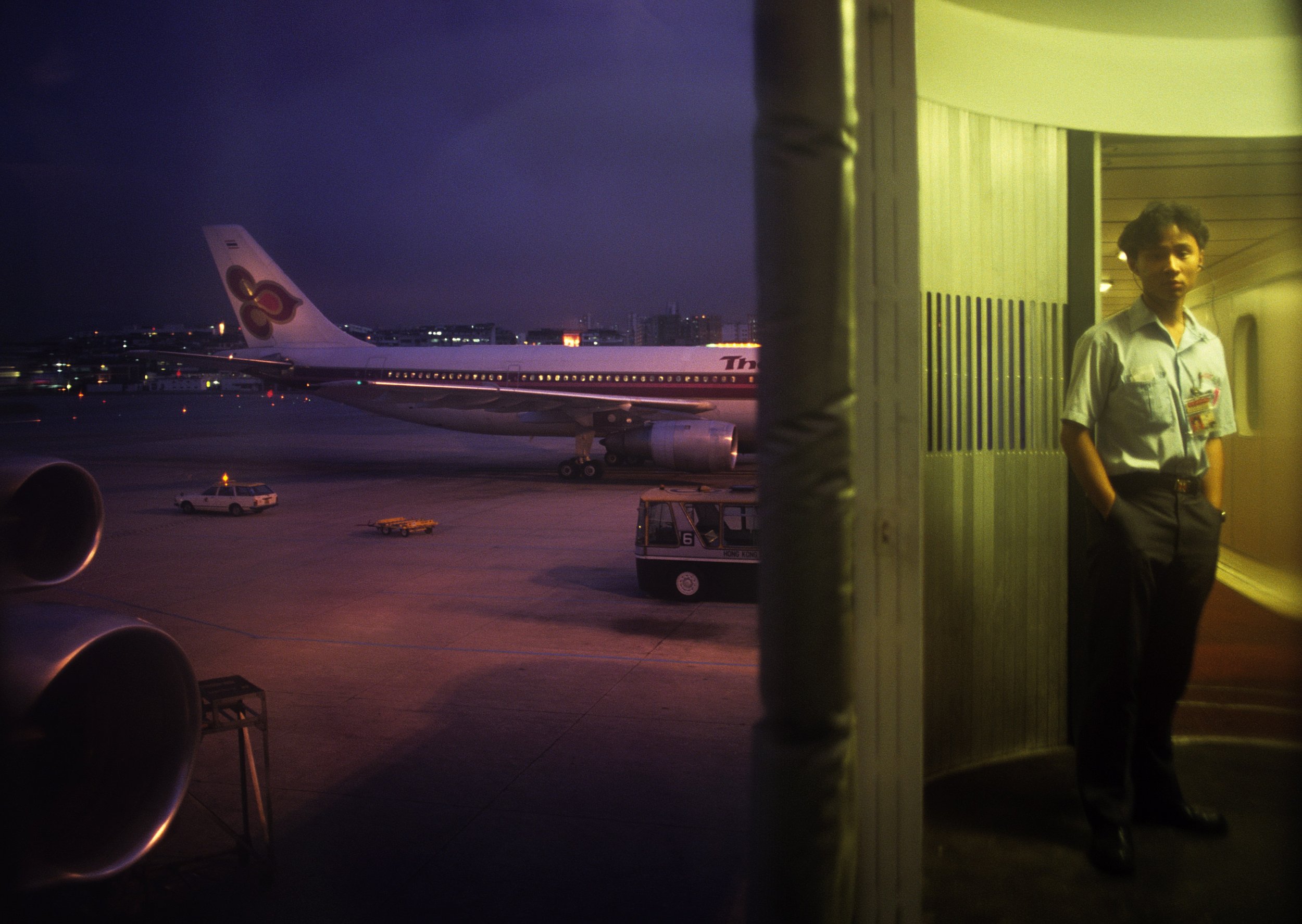

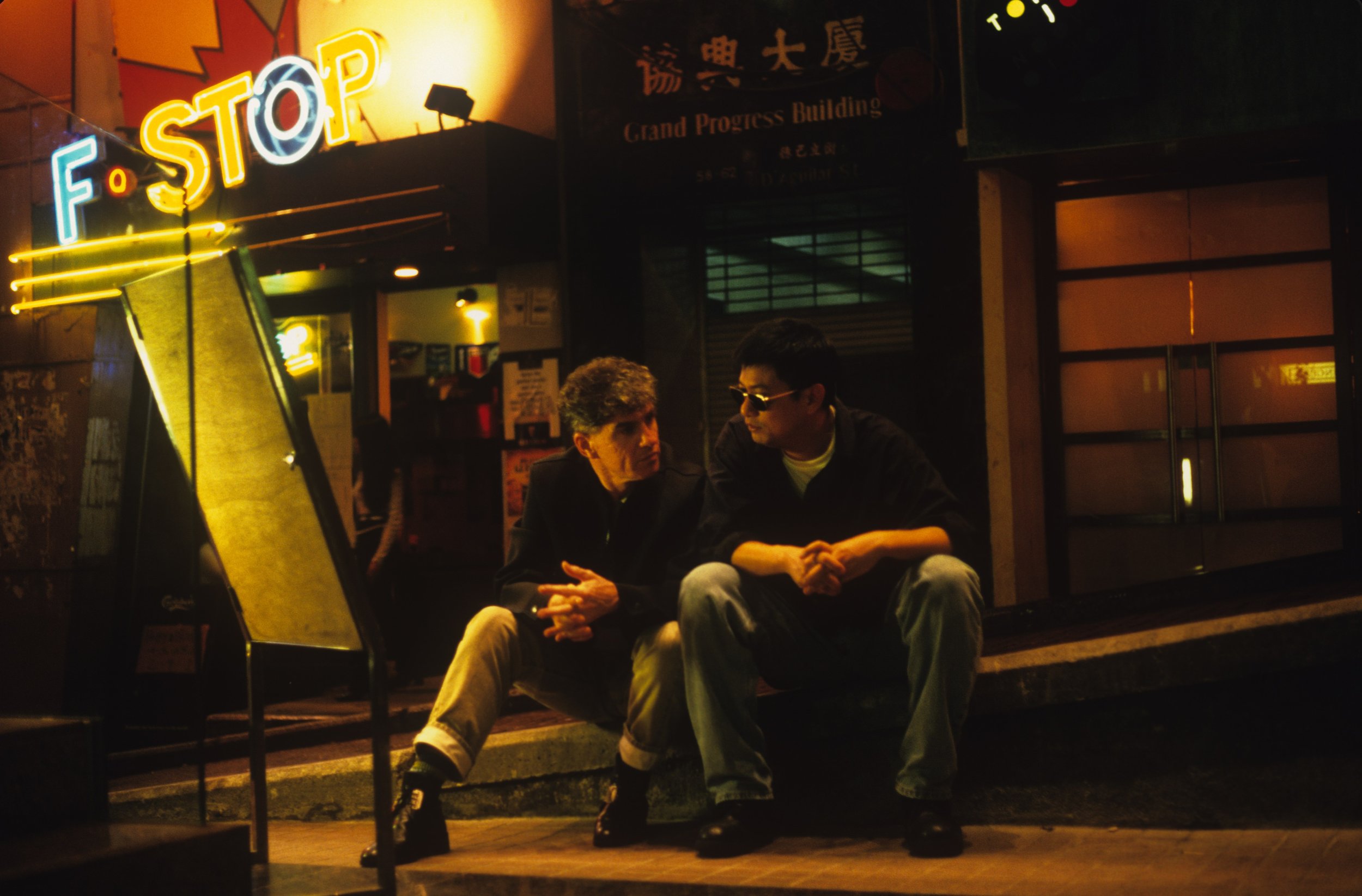

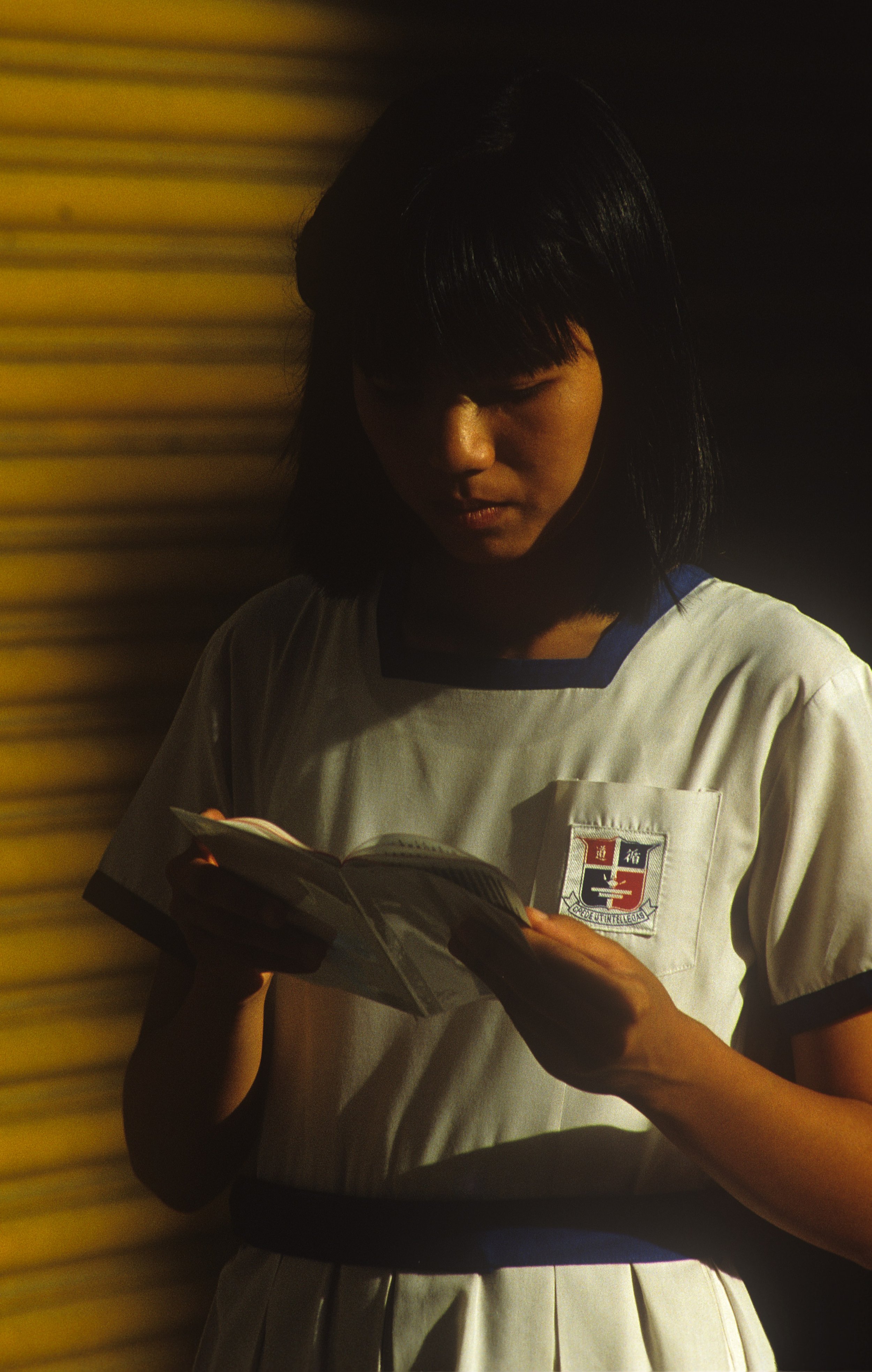
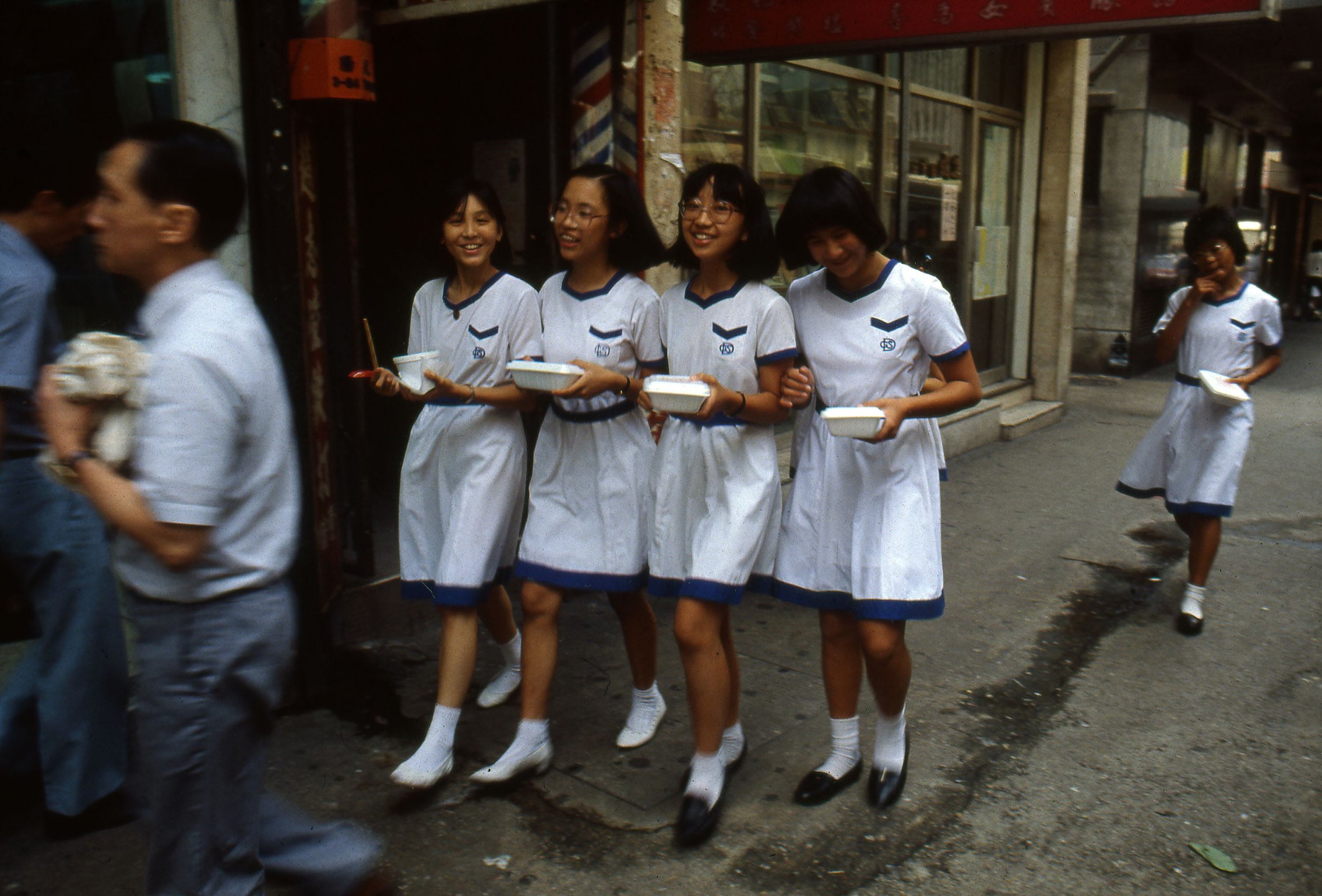
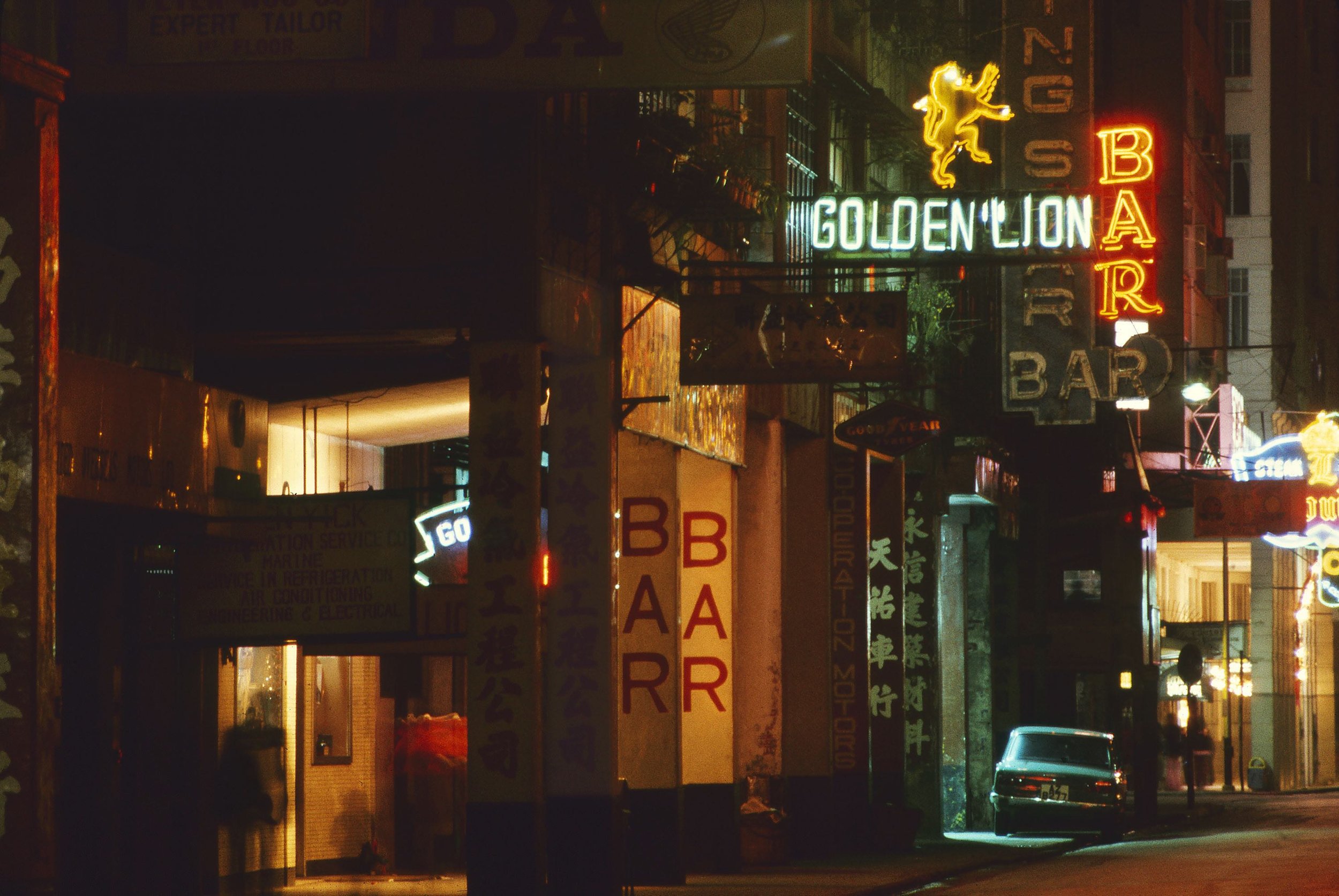
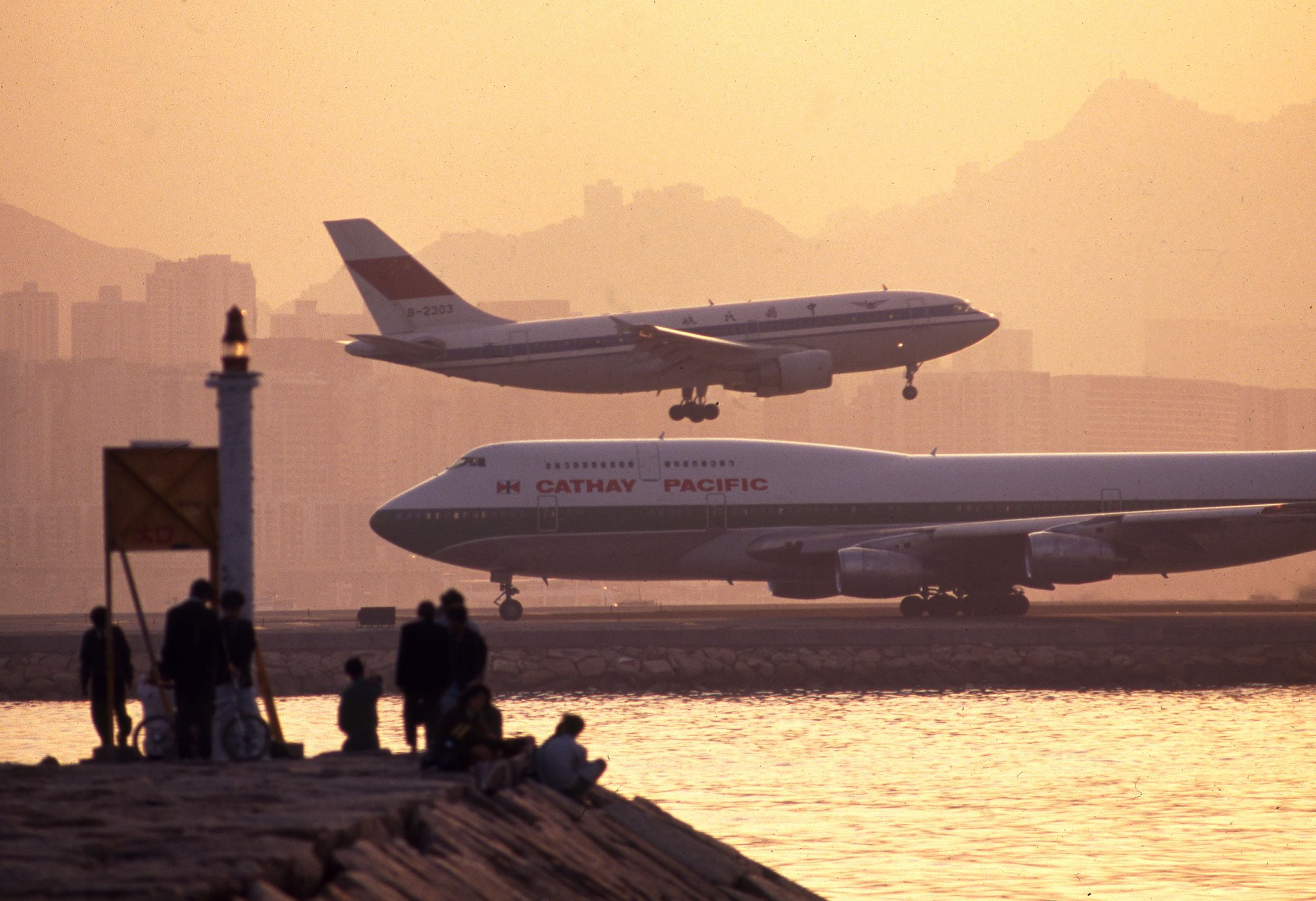

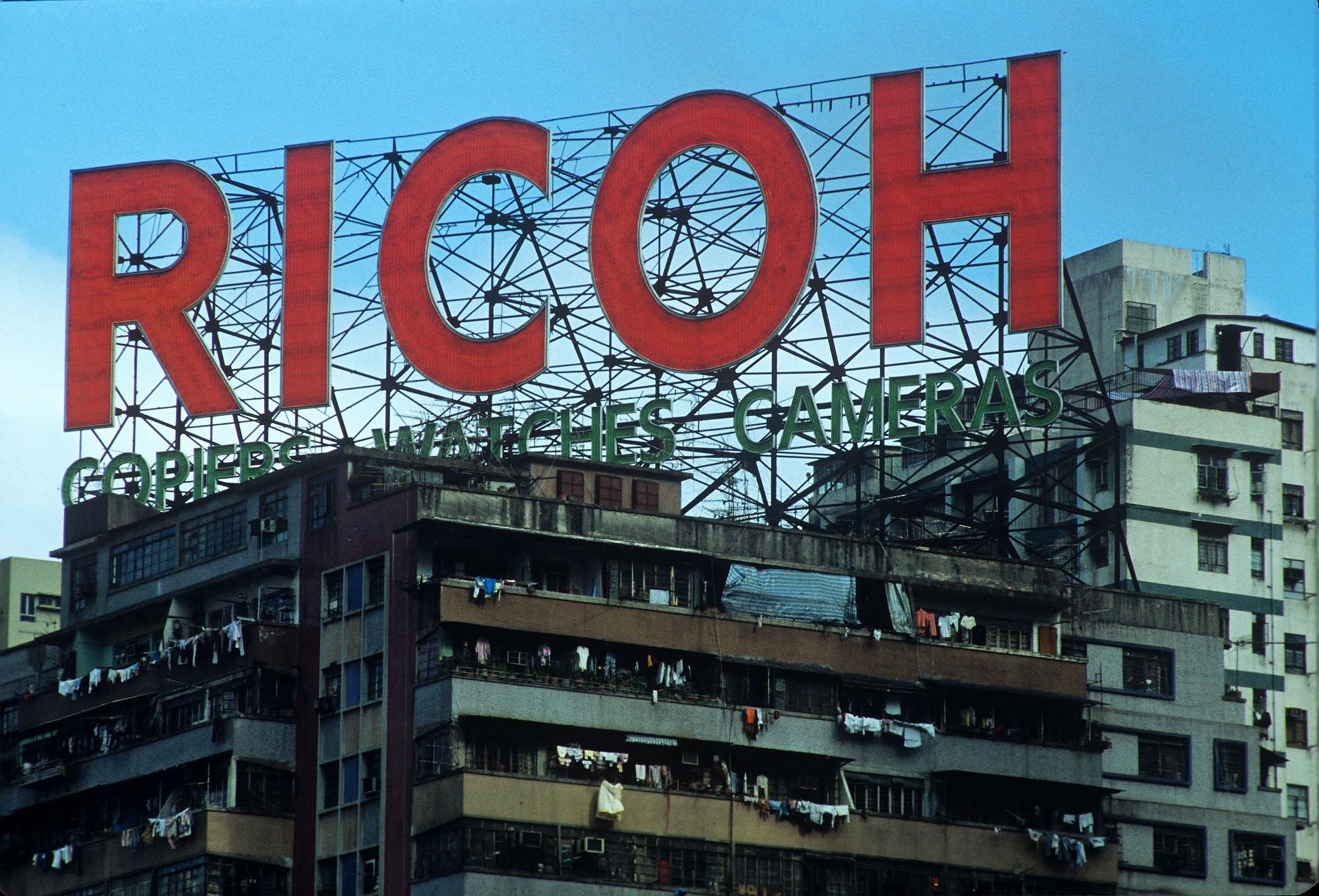
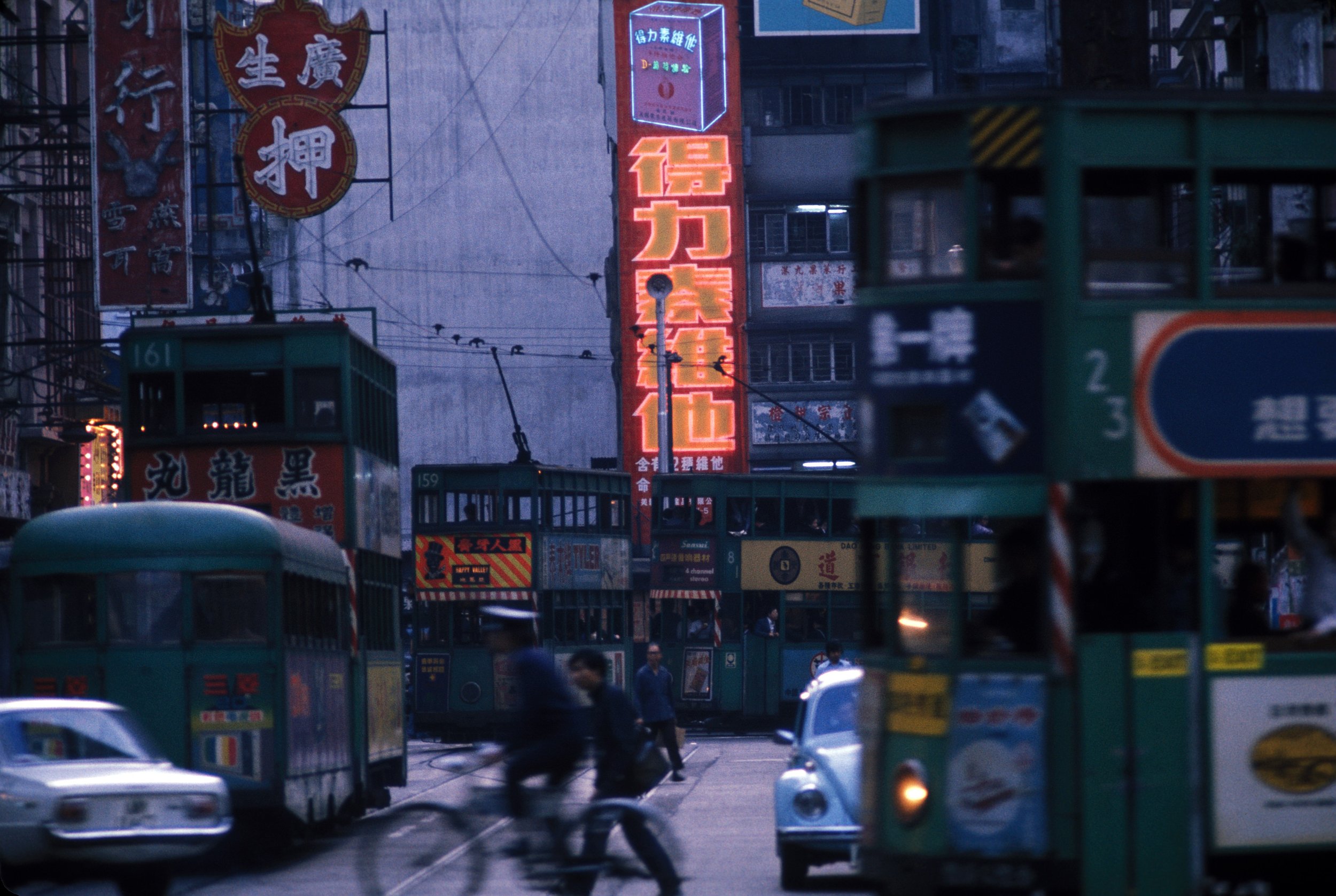


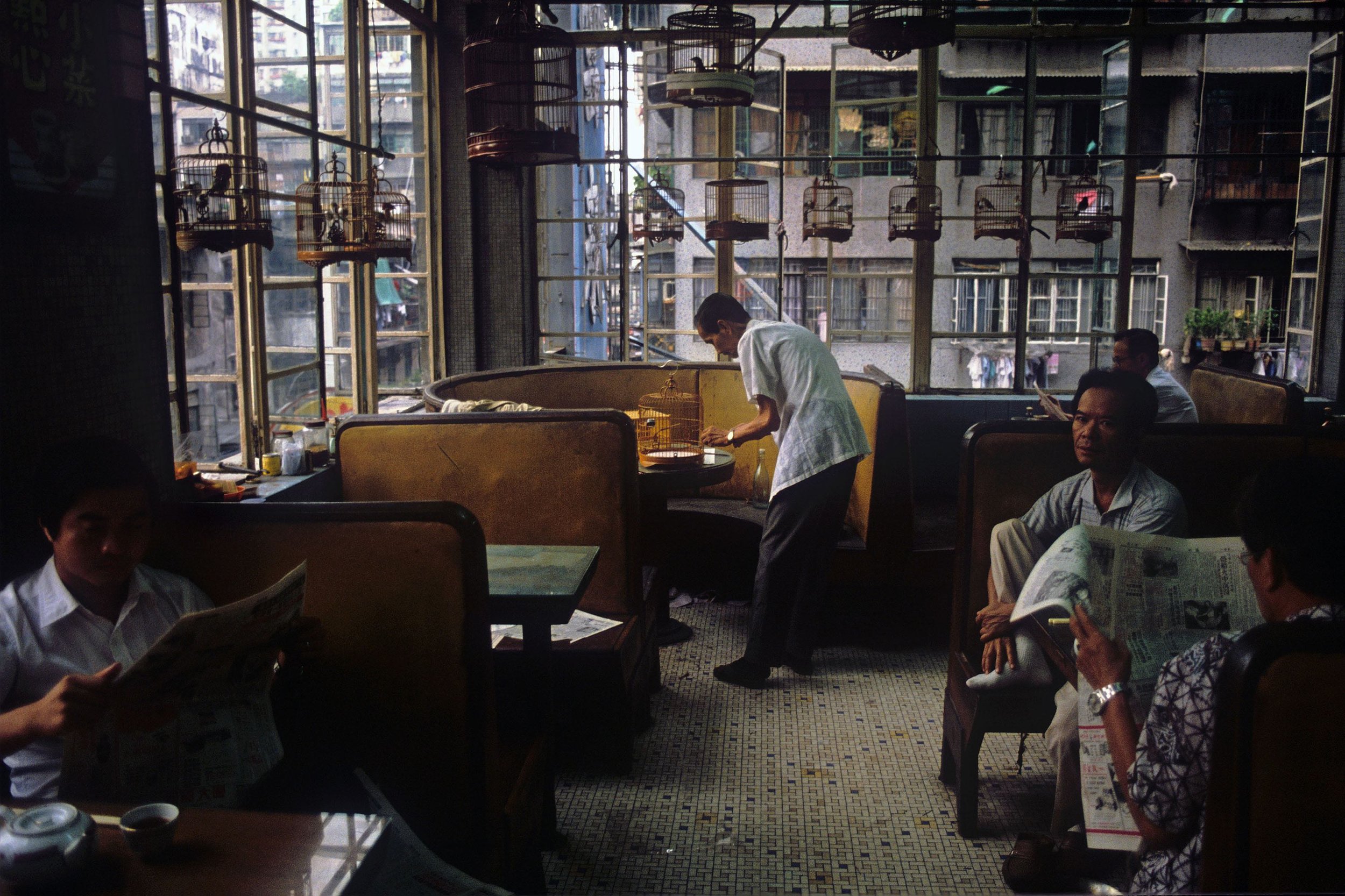
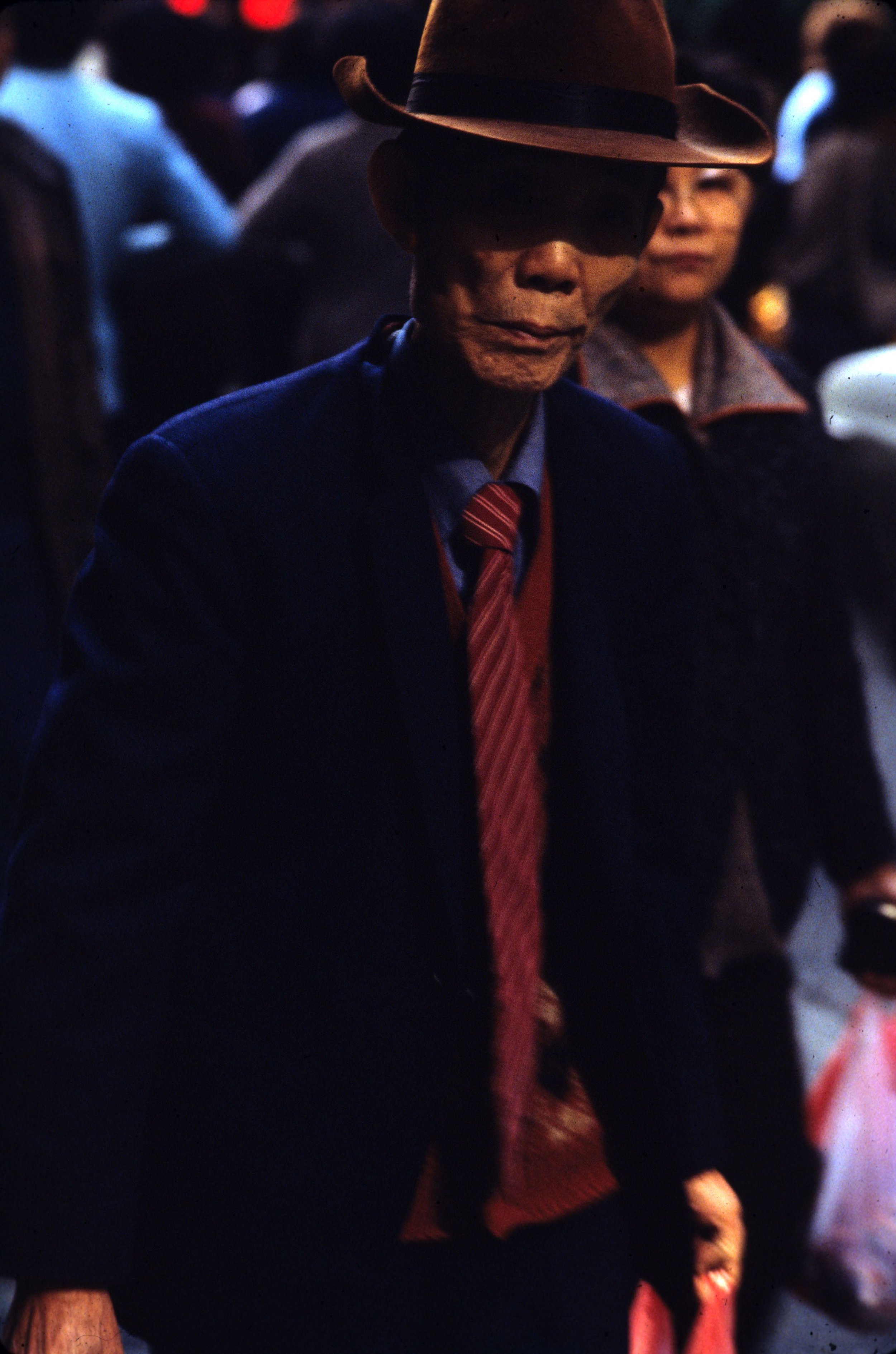
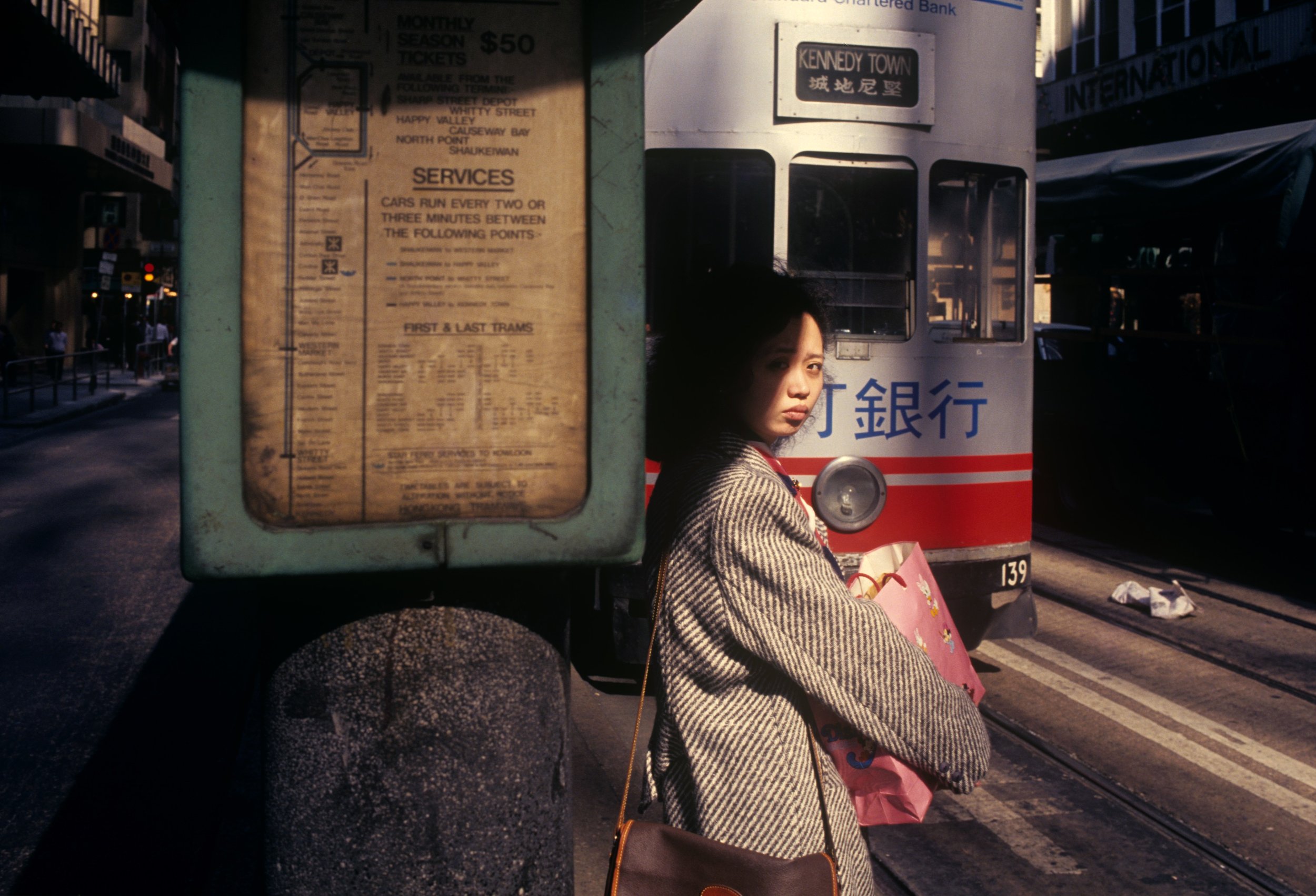

HK:PM
Hong Kong Nightlife 1974-1989
(exhibited at Blue Lotus Gallery, October–November 2017)
Published by Asia One, Hong Kong, 2017
26 x 19 cm
Hard Cover Case Binding
184 pages
English
ISBN: 978-988-77121-7-6
HK:PM is Greg Girard’s ode to nocturnal Hong Kong between 1974 and 1989: the earliest body of work in the photographer’s long relationship with Asia. It charts a journey into the city’s underside, first glimpsed when he arrived as a teenager in 1974 and later deepened during the 15 years that he called the city home. The photographs are suffused with the noir allure and seedy pastels of Hong Kong in its prime.
“I started taking photographs at night as soon as I picked up my first camera. I never really thought of them as ‘night’ pictures. It was just a different kind of light, whether neon, fluorescent, moonlight, or the glow of the city reflected off an overcast sky. But Hong Kong was alive at night in a way that other places weren’t,” says Girard. Alive indeed. When darkness fell, another world emerged, and these photographs capture just that.
HK:PM reveals people at work, at play, and simply getting on with their lives, most often against the atmospheric backdrop of Hong Kong after dark. It depicts a world unto itself: a city where jetliners skimmed rooftops on their way into Kai Tak, where desires could be fulfilled in an instant, and where people from every corner of the globe passed through. Eschewing glamour, Girard instead shows a tougher side of the city, yet one still driven by the hope of the “Hong Kong Dream.” Drawn to the hidden and often dark beauty of the everyday, he champions the common man, focusing on “the often overlooked features that define daily life for its residents.”
Published by Asia One and with a foreword by award winning Hong Kong director Ann Hui, HK:PM adds a missing photographic link to the visual record of Hong Kong in the 1970s and 80s.
《HK:PM》是 格雷格·吉拉德(Greg Girard)於 1974 年至 1989 年間,在香港夜間裡所奏出的頌歌,這亦成為了攝影師長期記錄亞洲的最早期作品之一。 1974 年,當 吉拉德 還是一名少年時,他第一次拜會這座城市的陰暗面,後來卻在此居住了十五年。《HK:PM》中的照片充滿了香港的黑色魅力和風流的粉彩色調。「當我擁有第一台相機後,便開始在夜間拍攝。但我從未沒有將它們視為『夜景』照片。不管是霓虹燈、螢光管、月光或是從陰雲密布的天空中反射出來的城市之光,於我來說都只是不同的光。但是香港在夜間卻充滿其他地方沒有的獨特活力。」吉拉德 說。 當黑夜降臨時,另一個世界乍然出現,而這些照片恰好捕捉了這一點。
《HK:PM》展現出工作中的人們、娛樂中的人們以及只是簡單地過著生活的人們,而其中大部分都是在香港特別的黑夜氛圍下進行。這個充滿自我的世界、一個就連噴氣客機降落時都幾乎與建築物接觸的城市、一個可以立馬滿足你不同需求的地方、一片來自五湖四海的人們都可以路經之地。《HK:PM》沒有刻意描繪某些人物與這座城市偶遇的魅力,反之卻邀請觀眾去欣賞,某些人受到「香港夢」的希望所驅使卻換來的苦澀。被日常隱藏同時黑暗的魅力所吸引,吉拉德 成為了「平民百姓」的擁護者,探索出「偶爾被忽略的居民日常特徵」。
由Asia One發行的《HK:PM》, 得到屢獲殊榮的香港導演許鞍華賜序, 亦為七、八十年代香港的視覺記錄填補了缺失的攝影鏈接。
Greg Girard, Kai Tai Aiport, 1989
Greg Girard, Hasty Tasty, TsimshaTsui, 1975
Prints by Greg Girard available here.
City of Darkness
(exhibited at Blue Lotus Gallery, November – December 2019)
Installation shot ‘CIty of Darkness’ exhibition at Blue Lotus Gallery, Hong Kong 2019
Greg's Story:
I first visited Hong Kong in 1974. I heard stories about the Kowloon Walled City on that visit but it wasn’t until I moved to Hong Kong years later that I saw the Walled City for myself. I came across it one night in 1986 when photographing near Hong Kong’s old international airport, Kai Tak. At that time the Walled City was partially surrounded by a two-story squatter village, and to enter the City you had to make your way past the hostile stares of village residents. At night the massive 12- and 14-storey facade glowed from the interior lighting of hundreds of apartments, and hummed to the sound of air conditioners and fans and television sets tuned to evening programmes.
Once inside the first thing you noticed was the tangled overhead electrical wiring and plastic water tubing, and the narrowness of the ‘streets’ – alleys formed in the spaces between buildings. Nothing I had heard about the place was any help to process the information my eyes, ears and nose were delivering. In modern Hong Kong this place was something from a parallel universe. I wasn’t able to make any photographs on that first visit, but soon returned and started trying to make sense of the place, gradually gaining the trust, or at least the indifference, of residents.
I was introduced to Ian during this time, intrigued to learn that someone else was interested in photographing the Walled City. And we ended up collaborating on the book City of Darkness: Life in Kowloon Walled City. In retrospect it seems astonishing that the Walled City didn’t attract more attention – from photographers, film-makers, architects – while it was still standing. And in our new book, City of Darkness Revisited, we go to some length to register the attention it has received and the influence it has generated since its demolition in 1993.
I am sometimes asked whether I think the Walled City should have been preserved. Years ago I usually said that it would have been impossible – preserving it would probably change it into something else or, if kept as it was, it would be unfair to expect people to tolerate those grim conditions. Recently though I’ve started to wonder where a conversation about it all might lead.
我於 1974 年首次訪問香港。在那次到訪中,我聽聞了關於九龍城寨的故事,但直到多年後我正式移居香港,才親眼目睹這座寨城。1986 年的一個晚上,我在香港舊啟德國際機場附近拍攝時遇見了它。當時,城寨被一個兩層高的棚屋區部分包圍,要進入城內,你必須經歷不友善的村莊居民目光。到了晚上,巨大的十二層及十四層高的建築面,從數百套公寓的室內燈光中發出光芒,空調、電風扇和正在播放晚間節目的電視機,發出嗡嗡聲響,響徹了整個空間。
當進入內部時,你首先注意到的是糾纏的架空電線和塑料水管,以及無數小巷在建築物之間的空間形成的狹窄「街道」。我之前所耳聞過關於這裡的資訊,對於我當下眼睛、耳朵和鼻子所接收的信息,完全沒有帶來任何幫助。在現代香港裡,這個地方彷彿來自平行宇宙。第一次到訪時,我驚訝得沒有拍攝任何照片,但我很快就重訪,開始嘗試理解這個地方,並逐漸贏得居民的信任,或者至少是無視。
在這段期間,我被介紹予 林保賢(Ian Lambot),很高興得知有人對拍攝九龍城寨感興趣。 結果我們合作完成了《黑暗之城:九龍城寨的日與夜》一書。 回想起來,最令我驚訝的是,城牆仍然屹立期間,竟沒有吸引到攝影師、電影製作人、建築師們的更多關注。在我們的新書《City of Darkness - Revisited》(黑暗之城-再訪)中,我們竭盡所能,記錄了自1993年拆除以來城寨受到的關注和所產生的影響。
有時我會被問及,到底是否應該保留城寨。 數年前,我通常說這是不可能的,保留它可能導致其自身的改變,又或者如果保持原貌,即是不公平地指望居民們繼續容忍這些嚴峻的生活條件。最近,我開始想知道,有關這一切的討論可以走到多遠。
Prints by Greg Girard available here.
Published by Watermark, The United Kingdom, 2018
Second edition
27 x 27 cm
Hard cover, 356 pages, English
ISBN: 978-1-873200-88-9
Prints Available online:
To receive the full catalogue, please contact us.
Press Received:
2025-2 | F-Stoppers - ‘The Wonderfully Atmospheric Urban Landscapes of Greg Girard’
2016-6 | Daily Beast - 'The Lost Chinese City Police Feared to Enter'
2016-4 | Daily Mail - 'Inside the fortress city: Amazing images from the lawless Hong Kong slum, once home to 30,000 and one of the most densely populated place on earth'
2015-12 | ASX - 'An Interview with Greg Girard: Vancouver to Kowloon – Watching Globalisation Unfold'
2015-1 | CNN - 'Life inside the densest place on earth: Remembering Kowloon Walled City'
2014-4 | Time Out Hong Kong
2014-4 | SCMP - 'A Blot to be desired'
2013-4 | Gizmodo - 'Kowloon Walled City: Remembering Hong Kong's Chaotic City of Darkness'
2013-2 | SCMP - 'Kowloon Walled City: Life in the City of Darkness'
2012-5 | Daily Mail - 'Inside the Kowloon Walled City where 50,000 residents eked out a grimy living in the most densely populated place on earth'
If you wish to receive Greg Girard’s e-catalogue, please complete the form below and we will revert real soon.






